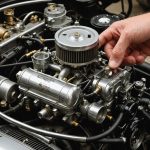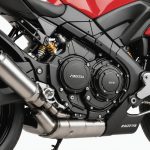Understanding Rollover Protection Systems
Rollover protection systems are essential vehicle safety features designed to minimise injury during rollover accidents. These systems typically include reinforced structures that enhance the vehicle’s ability to protect passengers. Understanding how rollover protection systems work is crucial in recognising their importance.
Rollover protection systems are engineered to absorb the energy during an accident. These systems often include elements like robust pillars, integrated roll cages, or deployable roll bars that ensure maximum vehicle integrity. By maintaining the vehicle’s shape during a rollover, these features help to prevent significant injury.
Also to read : Key Factors to Ensure Safety and Reliability When Installing a Dual Battery System in Your Camping Vehicle
Key safety statistics reveal the critical role rollover protection systems play in enhancing vehicle safety. According to data, vehicles with advanced rollover protections have substantially lower fatality rates in rollover accidents. The systems are a testament to modern engineering’s ability to safeguard occupants in high-risk situations.
The importance of these systems cannot be overstated. Ensuring that a vehicle is equipped with advanced rollover protection systems contributes significantly to overall safety. This feature is particularly vital for SUVs and trucks, which are more prone to rollovers due to their higher centre of gravity. Understanding these systems enables consumers to make informed decisions when purchasing a vehicle.
Topic to read : Essential Tips for Preserving Your Vehicle”s Roof-Mounted Antenna Integrity During Off-Road Adventures
Regular Inspection and Maintenance
Proper vehicle inspection and maintenance are crucial for ensuring the longevity and safety of your vehicle. Regular inspection can help in identifying potential issues before they escalate into significant problems.
Visual and Physical Inspection
Start by conducting a thorough visual and physical inspection. Look for any signs of wear or damage to the rollover protection system. Ensuring the structural integrity of this system is vital as it protects passengers in the event of an accident. Regular checks can help you spot any weaknesses early.
Professional Maintenance Checks
While personal inspections are important, arranging for professional maintenance checks is essential. Ideally, your vehicle should undergo a professional inspection at least twice a year. Using certified service providers ensures that your vehicle receives expert attention and any hidden issues are addressed by knowledgeable technicians.
Keeping Records
Maintain a detailed record of all your maintenance activities and inspections. Documenting these tasks not only helps in keeping track of your vehicle’s health but also adds value when reselling. A comprehensive maintenance log demonstrates your commitment to vehicle upkeep, thereby increasing its appeal to potential buyers.
Driving Habits That Affect Rollover Risks
Understanding how driving habits influence rollover risks is essential for maintaining vehicle stability and ensuring safe driving practices.
Speed significantly impacts the likelihood of a rollover. Driving at high speeds reduces the contact between tyres and the road, thereby increasing the risk of losing control. Vehicles with a higher center of gravity, like SUVs or vans, are particularly vulnerable. It’s crucial to maintain a low center of gravity by distributing weight evenly and avoiding overloading.
Sharp turns and sudden maneuvers are common culprits behind rollovers. They destabilise the vehicle and can lead to loss of control. To mitigate this risk, adopt safe driving practices such as gradual turning and smooth braking, especially on slippery or uneven surfaces. Such habits allow for better control over the vehicle, reducing the chances of a rollover incident.
In summary, adhering to these practices enhances vehicle stability, promoting a safer driving experience.
Training and Awareness
Understanding the significance of driver education is crucial in preventing rollover accidents. Comprehensive education programmes focus on teaching drivers the physics of rollovers, vehicle weight distribution, and manoeuvres to avoid such incidents. By targeting these areas, drivers can better anticipate situations that may lead to a rollover, and take proactive measures to prevent them.
In terms of enhancing awareness, several training programmes are recommended. Defensive driving courses often include modules on rollover prevention, providing practical knowledge on safe driving techniques. Additionally, there are specialized workshops that focus entirely on the dynamics of rollovers, teaching how to control a vehicle in sudden, unexpected scenarios.
To maintain the highest level of safety, drivers should stay updated on emerging safety practices and technologies. Regularly participating in safety training ensures that drivers are informed about the latest advancements, such as electronic stability control (ESC) systems and their role in preventing rollovers. Staying knowledgeable about these innovations empowers drivers to make informed decisions about upgrades to their vehicles or personal driving habits. Engaging in continuous education and awareness programs solidifies a driver’s capability to handle potential rollover situations effectively.
Safety Regulations and Compliance
Diving into vehicle safety regulations is crucial for understanding how these standards shape the automotive landscape. These regulations ensure that vehicles meet certain industry standards to protect occupants and improve road safety.
Understanding Federal Safety Standards
Federal safety standards encompass various facets of vehicle safety regulations, including those pertinent to rollover protection. Such regulations significantly influence vehicle design, mandating specific structural features to mitigate rollover risks. Compliance with these standards ensures that safety features are integrated into vehicle design, enhancing overall passenger protection.
Importance of Compliance
Compliance with industry standards is paramount as it affects both manufacturers and consumers. Failure to adhere to these regulations can have severe consequences, such as product recalls and reputational damage. Manufacturers must ensure their vehicles hold necessary safety certifications to maintain trust with consumers. Compliance not only prevents costly recalls but also reassures buyers of the vehicle’s structural integrity and safety.
Resources for Further Information
For those seeking deeper insight into vehicle safety regulations, numerous resources are available. Regulatory bodies and safety organizations offer comprehensive materials on industry standards. Engaging with these resources can provide valuable knowledge on maintaining compliance and understanding the broader context of vehicle safety.











